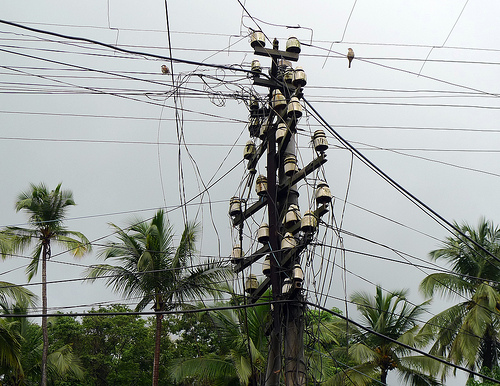
By Tao Tao Holmes:
Twelve-hour sleeper trains in India cost about five U.S. bucks. It’s great. For some extra dollars, you can upgrade to AC class, but frankly, I find the AC cabins akin to freezers, and falling asleep there feels like submitting to an experiment in human cryogenics, from which revival is uncertain.
On the evening of July 29, I dragged myself onto the last train of the summer, Delhi-bound, clambering up to the third bunk and splaying myself across its rigid blue surface, backpack-turned-pillow poking unidentifiable sharp objects into tender pockets of my neck. The train shuddered into steady motion, the light outside slowly started to fade, and the Indian mother suspended in the seat back-turned-middle bunk eventually eased her wailing toddler into blissfully silent sleep. I soon followed suit.
Had our train left a day, or even a matter of hours later than it did, the 12-hour journey might have stretched into 15, 20, 24, or god knows how many wretched, sweltering hours. For midway through the night, power across northern India went poof. Hundreds of trains ground to a halt, stranded out in No Man’s Land, while some of India’s biggest cities spiraled into an even more dysfunctional chaos than usual. The outages affected a reported 600 million people in 20 of India’s northern and eastern states, resulting in the most severe power cuts any part of the world has ever seen. It is a blessing that most of India is not yet as dependent on electricity as, say, the entire United States. (Nearly 300m of India’s poorest citizens are completely off the grid).
Our train reached the station in Delhi at five o’clock a.m. Everything seemed the usual; a throng of rickshaw drivers assaulted the two bedraggled foreign girls, surprised at our vehement haggling over a matter of 75 cents. My apartment building was quiet and subdued in the daze of dawn, the stairwell dark and stuffy. Upon entering, I found the ceiling fans as inert as my flatmate, and the light switches as responsive as an attitudinal adolescent. A sigh. No power.

Still, this was nothing unusual. The power in our block goes out with relative regularity, sometimes for three hours, sometimes for a hot and torturous five or six. It’s part of a normal power shedding strategy implemented across India, since major shortages of domestic coal render impossible the provision of power to everyone, all the time. Despite more than 26,000mw of capacity being added in 2012 (twice the level added in 2011), the shoddy grid system has proven incapable of effective and reliable transmission. An analysis by the Financial Times explained the problems stem from a failure by Coal India (90 percent government-owned) to deliver promised fuel supplies, problems of inefficiency, and the fact that the government hasn’t provided regulatory and environmental clearances. The FT also points out that many of the 28 state-level electricity boards are effectively bankrupt, rendering power generators reluctant and apprehensive to provide.
And, while the government seems to neglect the issue of secure and reliable power for its citizens, it is funneling immense amounts into its space program. While hundreds of millions of Indians plod along mid-August without electricity, Indian space engineers work on an $80m satellite mission to Mars. Development economist Jean Drèze described it as “part of the Indian elite’s delusional quest for superpower status,” while President Singh defended the venture as part of a “critical determinant of the wealth and status of nations and it is that which drives us to programs of this type.” Reactions are mixed; however, many Indians support the mission. One online commenter wrote: “Get your [article author] own poverty sorted out before you talk about other countries. I pay the tax and happy to be spent for this venture. I think it is intimidating for western nations to see the Indian elephant marching ahead despite obstacles.”
It’s an unoriginal retort. And understandable, since for people who are accustomed to losing electricity on a regular basis, these massive outages likely don’t seem that big a hullabaloo. But the Indian government must simply not be paying attention. The regular power cuts are severely hampering the country’s most promising industries and businesses. Factories dealing with weekly outages are forced to spend three times as much to run generators when without regular electricity. For large-scale manufacturing facilities, like those for steel and autos that depend on reliable, inexpensive power, the sometimes half-day outages prove a major and sometimes crippling obstacle. Unfortunately, “In Indian politics and public administration, personal loyalty and the appeasement of special interests take precedence over professional competence and the public good,” writes Ramachandra Guha.
For us plebes going about our daily doings in Delhi and elsewhere, a power cut here and there (and there, and there) just means a tad more sitting around (and sweating) than usual. But for big Indian businesses, as well as the rest of the world’s opinions, these power cuts are causing some critical damage. Probably time to fix it.
Tao Tao Holmes ’14 is in Branford College. Contact her at taotao.holmes@yale.edu.